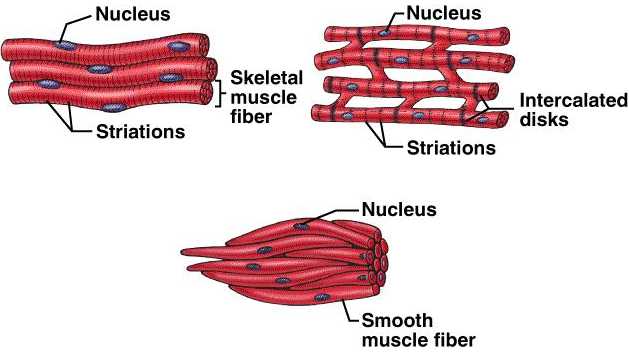
|
ANATOMY AND PHYSIOLOGY: TISSUES, FABRIC OF THE BODY |
I Tissues
A. Definition
B. Types
II Epithelia
A. Functions
1. cover or line surfaces
2. secretion
B. Characteristics
1. cellularity
2. polarity
3. avascular
4. basement membrane
5. rapid regeneration
C. Structure
1. shapes
2. number of layers

III Connective Tissue
A. Functions
1. connects, supports
2. protects
B. Components
1. cells
2. matrix (non-living)
a. amorphous material
b. fibers
1. collagen
2. elastic
3. reticular
C. Varieties
1. fragile ---> strong
2. hemopoietic
IV Muscle Tissue
A. Function
B. Muscle fiber
C. Types
1. skeletal
2. smooth
3. cardiac

V Neural Tissue
A. Function
B. Types
1. neuron
2. glia
By the end of this unit, you should be able to:
|
|
- list the characteristics of epithelial tissue - describe how the characteristics of epithelial tissue fit their location - identify the different epithelial shapes and layers - discuss the development and structure of a gland - distinguish between an exocrine and endocrine gland - list the components of connective tissue - explain the differences between fragile and strong connective tissue - draw the three different types of muscle tissue - compare the structural differences between the muscle types - compare the functional differences between the muscle types - draw a neuron and label its parts - make a general comparison between a neuron and a glial cell, including both structure and function |
return to A&P outlines
return to A&P
return to homepage
Last Updated: 4/22/24